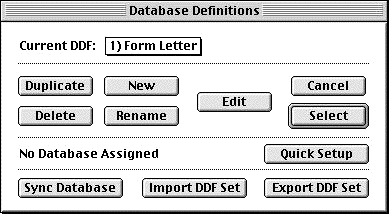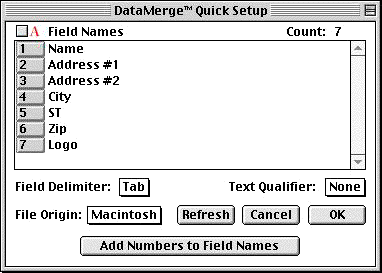
![]() is the process of adding one or more elements of variable information, which
is the process of adding one or more elements of variable information, which
pertain to an individual, business enterprise, or organization, into a printed or graphically
displayed document. This variable data minimally consists of the recipient’s name, and
may include certain other details that serve to confirm that the composition was produced
for one, and only one, person or entity. Personalization is used to produce mundane things
such as billing statements and insurance policies, and sophisticated things such as targeted
marketing materials, including city guides and shopping catalogs.
word processing programs. A user of one of these programs can define variables within a
document that will be replaced with data from an auxiliary file during the print-out opera-
tion. The auxiliary file, which must be prepared in a compatible format, contains the data
that will be merged with the fixed composition contained within the template document.
Documents that are used for this purpose are often called “boilerplate,” because they are
reproduced with the bulk of the information remaining constant, but with significant
variable information added to each copy.
![]() variable data printing,
variable data printing,
requires a degree of sophistication, both in the manner in which the variable information is
composed within the template document, and the way in which it is output for printing.
The process of variable data printing requires that:
can accommodate variability in the length of text associated with any of the database fields.
For example, a database field might contain a product description composed of just a few
lines in one case, but several paragraphs in another. There must be some means of having
the layout self-adjust so that copy is never cut off or overrun, or so that large empty spaces
are not introduced.
• Graphics and photographs are properly positioned, and resized, on-the-fly, so that they
occupy the amount of space allotted by the designer.
![]() database publishing.
database publishing.![]() Database publishing is a process that com-
Database publishing is a process that com-
bines variable data derived from a database, with an electronic document template that has
been composed in a page layout application. It merges the power and flexibility of the two:
cific contents, both textual and graphic, can be extracted at any given time. The database
has the strength of data selection and organization.
that will be common to all of the output for a given job. The page layout program has the
strength of design and presentation control.

natural partner for the personalization process.
intelligently into a template, some intermediary or middleware software must be used.
Such programs,which reside within the host page layout application, are usually in the
form of an addition, plug-in, or programextension. This middleware adds new features to
the host, and essentially becomes a part of it. A good example of such middleware is
DataMerge.*
__________
*Meadows Information Systems, 1305 Remington![]() Road, Suite G, Schaumburg, IL 60173, 847 882-8202,
Road, Suite G, Schaumburg, IL 60173, 847 882-8202,![]() http:/
http:/
/ www.meadowsinfo.com, e-mail:![]() meadows@meadowsinfo.com
meadows@meadowsinfo.com![]() , fax: 847 882-9494. DataMerge
, fax: 847 882-9494. DataMerge![]() supports all
supports all
PostScript printers, and has special features for variable![]() data digital
data digital![]() printers, including the Xeikon
printers, including the Xeikon
PrintStreamer and Xerox VIPP. These![]() special drivers are
special drivers are![]() available
available![]() separately and at extra cost.
separately and at extra cost.
range or any picture box in a Quark document to any external database of information.
Information is read from the database records and used to populate the individual fields to
create customized QuarkXPress layouts and perform advanced assembly of virtually any
type of![]() templated
templated![]() layout.”*
layout.”*
_________
DataMerge:![]() The Variable-Data Xtension
The Variable-Data Xtension![]() for QuarkXPress User
for QuarkXPress User![]() Manual,
Manual,![]() Meadows Information Systems, Inc.,
Meadows Information Systems, Inc.,
1998, Schaumburg, IL.
virtually any kind of database or spreadsheet application originating on a Macintosh, PC or
UNIX system. No special preparation or modification of the file is necessary.
database file to particular layout elements in the QuarkXPress document. This is accom-
plished through the use of a Database Definition (DDF). The Database Definition provides
details on how the database file is constructed, including the number of fields, the delimit-
ing character, and the field names. The DDF is defined by selecting
DataMerge>Setup>Database Definitions (FIG. 1). The definition is given a name, and is
then linked to the actual database file as a consequence of selecting Quick Setup. After this
is done, the user can see, and verify, the field names, the field delimiter, and the type of
computer system that created it (FIG. 2). This information is determined automatically by
DataMerge, although it can be modified by the user if necessary.

software interrogate the database file automatically. (Screen capture courtesy of
Meadows Information Systems)


names, field delimiter,and file origin automatically. This setup established the
VariableLinks that will connect certain database fields with elements in the
QuarkXPress layout. (Screen capture courtesy of Meadows Information Systems)